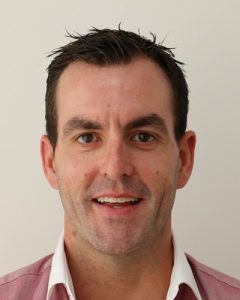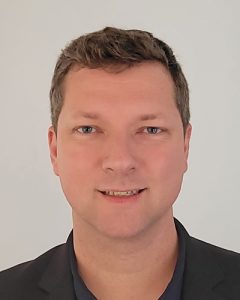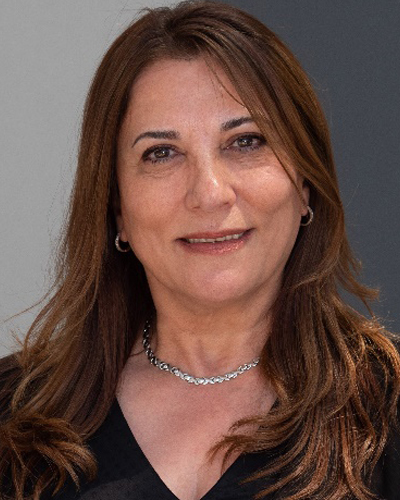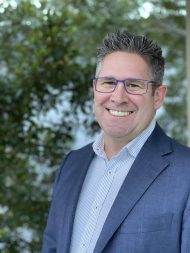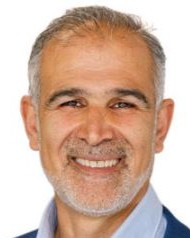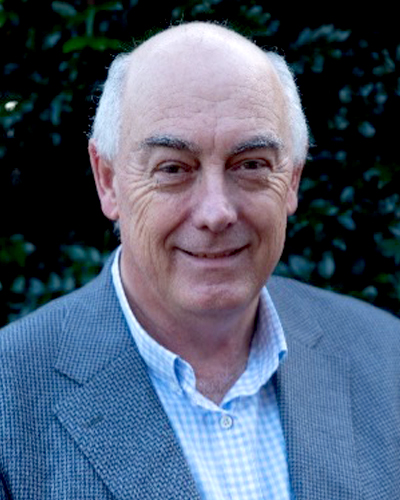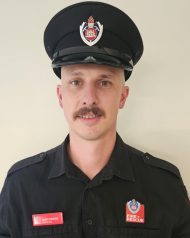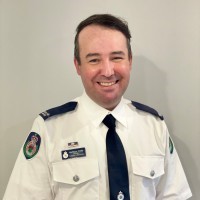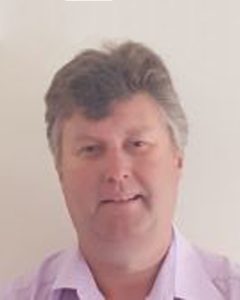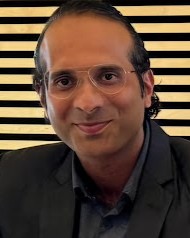Critical Communications Conference: Sydney, 28 – 29 May 2025
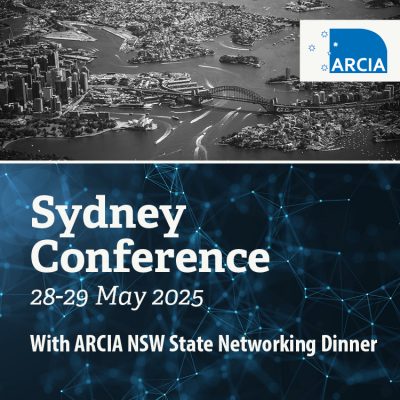
Get ready Sydney, we’re coming back! Don’t miss the ARCIA Sydney Critical Communications Conference and NSW State Networking Dinner 2025!
Following a fantastic conference in 2024, we’re headed back to Sydney in May 2025, with an expanded program that now includes pre-conference workshops on Wednesday 28 May.
Join us for the third ARCIA Critical Communications Conference in Sydney at the NSW Teachers Federation Conference Centre. The Sydney conference features pre-conference workshops running on Wednesday 28 May, followed by a jam-packed stream of radio and critical communications presentations on Thursday 29 May.
Finish off the day by getting together with your peers at the NSW Networking Dinner, where the highly anticipated winner of the NSW State Professional of the Year Award will be announced. You can make a nomination for this State Award via the ARCIA website until 2 May, 2025.
Numbers are strictly limited due to venue capacity for the conference and the dinner, so book your seats for you and your colleagues ASAP. Discounts apply on all rates for current ARCIA Members. Not a member yet? Join ARCIA now >>
Book your workshops, conference and dinner tickets now >>
Half-day Workshops | Wednesday, 28 May
9:00 AM – 5:00 PM
Location: NSW Teachers Federation Conference Centre, 37 Reservoir St, Surry Hills, NSW 2010
Conference | Thursday, 29 May
9:00 AM – 5:00 PM
Location: NSW Teachers Federation Conference Centre, 37 Reservoir St, Surry Hills, NSW 2010
Agenda: Download agenda
NSW State Networking Dinner | Thursday, 29 May
6:00 PM – 10:30 PM
Networking drinks from 6:00 PM – 7:00 PM
Location: Sydney Masonic Centre (SMC), 66 Goulburn St, Sydney NSW 2000
Stay updated on event information by following us on LinkedIn or subscribing to our Mailing List.
———————————————————————————————————————————-
Half-day workshops | W1 9:00am – 12:30 pm and W2 1:30 pm – 5:00 pm
- Workshop 1 | Private Cellular Networks (4G/5G) – The Fundamentals of the Technology and System Designs
- Workshop 2 | The TAK Imperative: Why Australian Mission Operations will Embrace this Unifying Common Operating Picture (Sponsored by Hypha Solutions)
Conference stream | 9:00 am – 5:00 pm
- Digital Platforms for Critical Communications
- Enhancing Operational Readiness: VaaN in the NSW RFS
- SpaceX Direct to Cell – The New Zealand Experience and the Impact & Opportunity for Australian LMR Users
- AI, IoT & LoRaWAN: Transforming Ultra-Early Fire Detection for Forestry, Infrastructure, and Climate Resilience
- 3GPP Mission Critical Broadband Services (MCX): Best Practices and Successful Deployment Case Studies
- Navigating Australia’s Airwaves – Exploring Spectrum Opportunities
- A Brief Look Under the Bonnet of TAK – Operations with an Interoperable, Unified Common Operating Picture
- Unifying Public Safety Communications within Surf Life Saving NSW: Seamless Integration and Interoperability between agencies using DMR and P25
- Collaboration from the Depths of Sydney’s Tunnels
Panel Discussion
- The Use of Satellite Communications in the Critical Communications Environment – Separating Fact from Fiction
Sydney 2025 Half-day workshops
Workshop 1 | Private Cellular Networks (4G/5G) – The Fundamentals of the Technology and System Designs
Wednesday 2 April | 9.00 AM – 12.30 PM
Presented by: Simon Lardner | Head of Wireless Business, Vocus
This workshop is an introduction to the technical and commercial framework behind private cellular networks. It will provide students with the skills to be able to outline the key elements and components of a typical private cellular network . Students will gain an understanding of the fundamental drivers behind the technology, as well as the key elements behind developing a business case for network deployment. Students will be able to describe the evolution from 4G to 5G, along with the associated migration paths.
The course will cover:
- Background to cellular networks (1G to 5G) and the fundamental philosophies behind them.
- Differences between Public/consumer cellular networks and private/industrial networks.
- The technical and commercial benefits and limitations of industrial cellular networks.
- The architecture of private cellular networks.
- The complexities and issues especially associated with 4G/5G Public Safety networks
- Basic solution system design & the building blocks of a solution.
- An analysis of 5G compared to 4G, along with the migration paths available to network owners.
This course is for students who:
- Come from both a technical and non-technical background.
- Have been to the previous ARCIA training sessions on Private Cellular Networks, or have a prior fundamental understanding, and want to understand the latest industry developments in 5G and it’s potential impacts.
- Are interested in their organisation building a Private Network and want to understand how to go about it.
- Already have a 4G private network and are interested in the what or how of a 5G network.
- Want to separate vendor hype from technical and commercial reality.
——————————————————————————————————————————————————-

Workshop 2 | The TAK Imperative: Why Australian Mission Operations will Embrace this Unifying Common Operating Picture
Thanks to workshop sponsor Hypha Solutions, this workshop is free to attend in Sydney. Tickets are limited.
Wednesday 2 April |1.30 PM – 5.00 PM
Presented by: Graham Tait | Mesh Solutions Lead, Hypha, and Neil Jamieson |Group CEO, Hypha and Matt Franks | Senior Solutions Engineer, Hypha
As we explore TAK (Team Awareness Kit) to understand what it is, its opportunity for application and explore various use cases, this workshop will be an opportunity to hear from the experts and experience some hands-on training with TAK.
TAK delivers an interoperable unified common operating picture (COP) based on non-proprietary, open-source software developed and continuously updated by the US Department of Defence.
Australian public safety agencies and emergency management organisations can embrace the civilian TAK stream as a unified operational picture, that fits in the hands of remote emergency workers and is also available to benefit private-sector users too, including park operations, marathon and festival organisers and other large events and operations.
Hear how this life saving approach to technology use can serve Australia:
- Hear about strategies for deploying TAK on an enterprise scale, from device selection to end user training and adoption
- Observe in-depth case studies on the use of TAK for special events, law enforcement tactical operations, wildland firefighting, and search and rescue
- Learn about the large range of communications options for using TAK in remote/off-the-grid conditions
- Discuss the inclusion of TAK in interoperable communications planning, as a compliment to P25 radio, and as a scalable alternative to proprietary silos
Sydney 2025 Conference Stream | 9:00am – 5:00pm
If you would like to be the first to know about conference announcements, follow us on LinkedIn or subscribe to our Mailing List.
Digital Platforms for Critical Communications
Presented by: Craig Parnham | Executive Director, Digital, Technology and Innovation, NSW Telco Authority
In this presentation, Craig will discuss the customer centricity and digital platform approaches NSWTA is adopting to help to integrate a range of technologies into a unified system, enhancing information sharing during emergencies.
Critical communications platform could combine radio, mobile broadband, and data feeds, allowing seamless communication between agencies. This requires:
- Standardised protocols: Ensuring different devices can connect.
- Governance: Rules for platform use, access, and security.
- Scalability: The platform must handle increased demand during crises.
By viewing critical communication systems as platforms, we can design more effective, resilient solutions for first responders, improving their ability to respond to emergencies.
———————————————————————————————————————————-
Enhancing Operational Readiness: VaaN in the NSW RFS
Presented by: Matthew White | Manager of Operational Platforms, Rural Fire Service
The NSW RFS is strengthening its operational technology capabilities through the Vehicle as a Node (VaaN) program. VaaN equips fleet vehicles with resilient satellite connectivity using Starlink, advanced modems, and wireless networking, ensuring real-time data access and communication even in remote or fire-affected areas. By creating mobile network hubs, VaaN enhances situational awareness, supports decision-making, and enables continuous operational coordination during both small- and large-scale incidents. This technology empowers RFS members with reliable, on-the-ground connectivity, critical for maintaining effectiveness and safety in dynamic environments.
This presentation will outline the VaaN capability in detail, demonstrating how it will enhance operational outcomes for the NSW RFS and provide broader benefits across the emergency services sector.
———————————————————————————————————————————-
SpaceX Direct to Cell – The NZ Experience and the Impact & Opportunity for Australian LMR Users
Presented by: Andrew Thompson | CEO and Founder, Fresh RF
SpaceX Direct to Cell (“DTC”) technology is moving at a rapid pace and is likely to be the most profound change to mobile communications (data and voice) since the introduction of GSM. From launchpad to being operational in LEO as a DTC cell tower is about 2 hours. In 2024, 300 DTC capable satellites were launched. Those 300 satellites provided a global constellation enabling SMS and IoT data anywhere, and in real-world practical terms, at any time – a global network in 1 year. By May 2025 there will be 600 DTC satellites and depending on Starship launches, there could be 1,200 by the end of 2025, with corresponding very low latency levels.
OneNZ are the first telco in the world to release a commercial product based on the SpaceX Direct to Cell network, initially SMS and now IoT data. As a result of both their experience working with SWARM satellite and low speed networks such as radio, the FreshRF/APIS teams have been working closely with OneNZ and Starlink to roll out a commercially viable IoT solution for commercial beekeepers, along with general remote sensing. Their IoT solution was deployed for commercial beta with customers at the end of 2024, and was due to be commercially released by mid-February 2025. In Australia both Optus and Telstra have signed carrier agreements with SpaceX and will be releasing end user DTC SMS, IoT Data and Voice plans in 2025.
With DTC cell towers spinning around the world at 26,000km/hr, coming and going at different RSRP levels and for (somewhat uncertain) periods of time, maintaining connectivity and latency to support SMS, Data, and Voice has been at best challenging, with a huge number of lessons learnt.
As a result of both our radio experience, early and ongoing work on DTC with carriers and SpaceX, FreshRF have a unique and practical perspective on how DTC might affect and compliment 2-way radio in 2025. This session will therefore cover past experience, what we expect to see going forward in the next 6-12 months, and the possible implications and opportunities for two-way radio users and dealers.
———————————————————————————————————————————-
AI, IoT & LoRaWAN: Transforming Ultra-Early Fire Detection for Forestry, Infrastructure, and Climate Resilience
Presented by: Sohan Domingo | Vice President Sales Technology and Operations, Dryad Networks
As climate change accelerates, bushfires and industrial fires pose a growing threat to critical infrastructure, including power grids, communications networks, and industrial assets. The challenge lies not only in fire prevention, but also in ensuring continuous, reliable monitoring in remote and high-risk locations.
As an example, in this session, we explore how AI-driven, solar-powered sensors leveraging LoRaWAN—a critical unlicensed network for IoT—can transform ultra-early fire detection. This technology not only protects forestry from destructive bushfires but also safeguards essential infrastructure from fire-related damage. By detecting fires at their smoldering phase, LoRaWAN-enabled sensors can provide real-time, long-range, and cost-effective monitoring, without relying on traditional communications networks.
Discover how AI, IoT, and LoRaWAN are revolutionising fire prevention, risk mitigation, and climate resilience—helping governments and industries protect assets, reduce economic losses, and move toward a net-zero future.
———————————————————————————————————————————-
3GPP Mission Critical Broadband Services (MCX): Best Practices and Successful Deployment Case Studies
Presented by: Bidar Homsey | Principal Consultant and Head of Business Development, Public Safety for Frequentis Australasia Pty Ltd, Chair and Board Director Australasian Critical Communications Forum (ACCF)
The session will cover:
- 3GPP Global Standards
- Important Step Towards Standardisation: Testing, Certification and Activation
- Standardisation Roadmap
- LMR to MCX migration path
- MCX Applications with Successful Deployment Case Studies
———————————————————————————————————————————-
Navigating Australia’s Airwaves – Exploring Spectrum Opportunities
Presented by: Andrew May | Licensing Manager, Spectrum Engineering
A wide-angle view of ACMA’s ongoing work program, including consideration of wider channels in the microwave point to point bands, the potential partial redeployment of the ‘upper’ 6.7 GHz band to wireless broadband services, and the lay-of-the-land now that ACMA have completed the multi-year “Area Wide Licence” process in the 3.4-4 GHz band across the entire continent.
———————————————————————————————————————————-
Unifying Public Safety Communications within Surf Life Saving NSW: Seamless Integration and Interoperability between agencies using DMR and P25
Presented by: Chris Stevens | Managing Director, Cart GIS
Since 1907 SLSNSW has provided essential lifesaving services to the bathing public. However, with the more recent move to the role of an emergency services (support) organisation, SLSNSW now provides rescue responses to NSW ESO Control agencies including Police, Ambulance, Fire and SES. This recognition required the upgrade of communications systems and the integration to connect to the NSW PSN via CSSI.
During large-scale emergencies, the SLSNSW State Operations Centre coordinates with other NSW emergency service organisations where NSW State Emergency Response multi-agency responses are required, to provide the most appropriate Search and Rescue assets to the scene of coastal incidents and emergencies.
The project commenced in January 2023 and was completed by July 2024, requiring a coordinated effort from multiple stakeholders including SLSNSW, NSWTA, CartGIS, Omnitronics, BAI and Motorola. This case study will take a closer look at the integration pathways and project successes.
———————————————————————————————————————————-
A Brief Look Under the Bonnet of TAK – Operations with an Interoperable, Unified Common Operating Picture
Presented by: Neil Jamieson | Group CEO, Hypha
This session will take a brief look at TAK (Team Awareness Kit) to understand what it is and its opportunity for application, whether for remote emergency workers or private-sector users, including park operations, mine sites, marathon and festival organisers or for other large events and operations.
TAK delivers an interoperable unified common operating picture (COP) based on non-proprietary, open-source software, developed and continuously updated by the US Department of Defence.
Hear how this life saving approach to technology use can serve Australia as as a compliment to P25 radio for example, and as a scalable alternative to proprietary silos.
———————————————————————————————————————————-
Collaboration from the Depths of Sydney’s Tunnels
Presented by: Kurt Foster | Senior Project Officer Operational Communications, Fire and Rescue NSW
After the 2019/20 bushfires Rail Fire & Emergency’s (RFE) Kurt Foster recognised the need for research to assist with the advance of communications technology within the organisation, in order that RFE personnel could communicate with other ESO’s as and when required. After careful consideration of partner agencies, it was determined that Fire & Rescue NSW (FRNSW ) was able to provide a suitable solution.
After numerous stakeholder engagement meetings, RFE and FRNSW signed a formal MOU, embedding RFE as a like for like station with FRNSW technology, training and equipment, leading to a strong relationship with RFE and FRNSW Ops Comms to enhance IBC coverage
Sydney’s legacy tunnels are an environment denied of PSN or LTE coverage, with both organisations working to field test solutions to provide extendable mesh technology into these challenging environments. Now, with the chosen technology in place, RFE have been able to leverage the use of the TfNSW Wi-Fi network to enable over 10,000 WAP’s to provide IBC.
———————————————————————————————————————————-
Panel Discussion: The Use of Satellite Communications in the Critical Communications Environment – Separating Fact from Fiction
Panellists: Andrew Thompson, Simon Lardner, Neil Jamieson and Matthew White
Moderated by: Chris Stevens
In recent years we have begun to see the use of satellite communications in critical communications environments like never before. Whilst we know and understand that technology, coverage and access has changed considerably in the last few years alone, and whilst some organisations have jumped in with both feet to adopt it’s use as part of an overall communications ecosystem, others have been slower to adopt the technology.
In this panel session we will look to separate fact from fiction with regard to its application and use; consider the threats and opportunities within the traditional LMR environment and we will also explore the barriers to entry that prevent some from making a move towards the adoption of the currently available solutions.
Conference Chair
Chris Stevens
Managing Director, CartGIS | Chris Stevens is Managing Director of CartGIS Pty Ltd, an emergency management, GIS and mapping and communications consultancy company based in Melbourne. Chris has extensive experience in LMR network design, planning and implementation as well as GIS and mapping application design and commissioning. CartGIS Pty Ltd also specialises in bespoke training and education for the critical communication community. Chris has extensive qualifications and experience in secondary, tertiary and workplace training and education, which, coupled with his communication experience, delivers industry and client focused outcomes. Chris is also Co-Vice President of ARCIA, and Sub-committee convenor of training and education for ARCIA. |
Presenter Biographies
Andrew May
Executive Manager, Spectrum Engineering Australia | Andrew is the Executive Manager of Spectrum Engineering Australia and has been with Spectrum Engineering for 19 years. During this time he has amassed a broad and intimate working knowledge of the regulatory environment and the coordination and licensing requirements for radio services in Australia. He now leads a team of professional engineers who provide licensing solutions to all sectors of the radio industry including the major carriers, government and the private sector. Andrew holds a Bachelor of Computer Engineering with First Class Honours from the University of Wollongong. He holds accreditation under the Australian Communications and Media Authority to issue Frequency Assignment Certificates and Interference Impact Certificates, and holds Approved Radio Certifier (ARC) status under New Zealand’s Radio Spectrum Management (RSM) branch. |
Andrew Thompson
CEO and Founder, Fresh RF | Andrew Thompson is CEO and Founder of Fresh RF. He has been involved with critical communications across 2-way radio for voice and data since the early days of analog radio and later digital radio. He has extensive real-world experience with developing technology and the needs of control room staff. |
Bidar Homsey
Principal Consultant & Head of Business Development, Public Safety, Frequentis Australia | Chair and Board Director, Australasian Critical Communications Forum (ACCF) | Bidar is the Principal Consultant and Head of Business Development, Public Safety for Frequentis Australasia Pty Ltd and a Chair and Director on the Board of the Australasian Critical Communications Forum (ACCF), the local chapter of the international TCCA. Educated as a Physicist in UK and Australia, Ms Homsey has been working in the telecommunication industry for over 25 years. Starting her career in consulting firms, moving then to Telstra and Ericsson, and now at Frequentis, in all of these positions Bidar has passionately served organisations with mission-critical communication requirements and their end users. |
Craig Parnham
Executive Director, Digital, Technology and Innovation, NSW Telco Authority | Craig Parnham joined the NSW Telco Authority in March 2025. In his role as Executive Director, Digital, Technology and Innovation, in addition to providing leadership to the management and operation of the NSW Public Safety Network, Craig is responsible for leading NSWTA’s digital strategy, managing engineering, spectrum, cyber security, enterprise architecture, data and analytics, and innovation. Craig oversees the agency’s broadband strategy roadmap to develop mission-critical telecommunications data services in partnership with the Australian, state and territories’ governments. Craig brings more than 30 years of telecommunications experience, including 14 years of digital transformation, to NSWTA. This includes leadership roles with prominent telecommunications brands such as BT, MCI Worldcom, Spark NZ and Telstra. |
Faz Moradi
Director, Client Solutions and Strategic Partnerships, Motorola Solutions Australia and New Zealand and Director of ACCF | Faz Moradi leads the development of Motorola Solutions’ customer solutions and strategic partnerships in Australia and New Zealand. With more than 30 years experience, Faz has an innate understanding of the land mobile two-way radio, wireless data and radio communications infrastructure and applications used by mission-critical sectors, from public safety to mining and beyond. Faz’s broad industry experience includes systems and field engineering, project and program management, sales and business development. Based in Melbourne, Faz shares his expertise in designing and developing radio systems with customers throughout Australia and New Zealand. Faz also serves on the board of the Australasian Critical Communications Forum (ACCF), a not-for-profit membership organisation and on the regional chapter of The Critical Communications Association (TCCA). Faz holds a Bachelor’s of degree in Electronic Engineering from the University of South Australia and a Master of Business Administration from La Trobe University’s School of Management. His hobbies include aviation, reading, volunteering, teaching and mentoring the next generation of talent in the critical communications industry. In his free time, you might find Faz walking to raise funds for OXFAM or other charities as well as attending flight school with his son Maxwell, where the pair have flown number of aircraft types together. |
Graham Tait AFSM GIFireE
Mesh Solutions Lead, Hypha | Graham Tait AFSM is a former firefighter with Fire & Rescue NSW for over 40 years, including 37 years as a career firefighter and officer, he is also a current serving volunteer firefighter with the NSW Rural Fire Service where he has over 46 years service. During his career, he specialised in the areas of both Rescue and Operational Communications. He was a member of the AUS2 Urban Search & Rescue team for 12 years which saw him deployed to various incidents including the Christchurch Earthquake, Japan Tsunami, Vanuatu Cyclone and Indonesian Earthquake as both a rescue team member and communications lead officer. Serving in the Operational Communications role for the final 17 years of his career, he dedicated himself to the key areas of managing the Computer Aided Dispatch system, Automatic Vehicle Location and Mobile Data system, radio networks and hardware, GIS, and field deployable communications systems. He has been recognised for his leadership in the Public Safety and technology space both in Australia and Internationally, and continues to advocate for advances in communications and technology that will provide improvements in safety and efficiency for front line emergency personnel. Following his retirement from full time firefighting in 2022, he has taken up a role with Hypha Solutions to ensure he can continue to bring his experience to the business continue to advance technology for the first responder community. |
Kurt Foster
Senior Project Officer Operational Communications, Fire & Rescue NSW | Kurt is currently a Senior Firefighter with Rail Fire & Emergency (RFE), Transport for NSW. RFE is a specialist fire and emergency unit that responds to incidents on the rail network. The team has dedicated rail capabilities including emergency trolleys and road/rail vehicles to transport emergency services into the Sydney Tunnel network. As SME’s in rail hazards and rolling stock Kurt and his team provide emergency services with subject matter expertise in the rail environment. Kurt is also a Retained Firefighter with Fire & Rescue NSW at Riverstone and is currently on secondment to FRNSW Operational Communications as the Senior Project Officer providing assistance to the “Connected Firefighter Program” and enhancing the organisations capabilities for in building coverage. |
Matthew White
Manager of Operational Platforms, NSW Rural Fire Service (RFS) | Matthew White is the Manager of Operational Platforms at the NSW Rural Fire Service (RFS), leading the development and support of mission-critical technology systems that enhance frontline emergency response. With 13 years of experience in operational communications and across the RFS, he brings deep expertise in public safety technology, systems integration, and cross-agency coordination. He oversees key initiatives including Mobile Data Terminals (MDTs), the Vehicle as a Node (VaaN) program, and the paging replacement project. Matthew also led the rollout of platforms such as Activ and FireMapper. A strong advocate for continuous improvement, he and his team focus on delivering faster, smarter, and safer outcomes for firefighters and communities across New South Wales. |
Neil Jamieson
Group CEO, Hypha | Neil has been involved with exploring Satellite communications and applications for over 20 years with a specific interest in the Public Safety Sector. As a founder, and the Group CEO of Hypha Ltd. Neil has been at the forefront of Satellite applications in the Public Safety sector in Australia. From simple PTT applications to driving Big Data solutions with new LEO constellations, it has been his mission to explore non-traditional options to solve some of our unique communications challenges in Australia |
Simon Lardner
Head of Space and Wireless, Vocus | Simon is head of the ‘Space and Wireless’ division within the telecommunications company Vocus. He is an engineer by trade with now somewhat surprisingly over 35 years of experience in the field of mobile communications. He has spent much of his career as an expat in Europe, North America and Asia but is now firmly based in sunny Melbourne. |
Sohan Domingo
Vice President Sales Technology and Operations, Dryad Networks | Sohan Aloysius Domingo is a global technology leader dedicated to leveraging AI, IoT, and advanced analytics to drive sustainability and innovation. As Vice President of Sales, Technology & Operations at Dryad Networks, he is focused on using AI-powered wildfire detection to reduce CO? emissions and support global net-zero initiatives. With over 20 years of international experience spanning Fujitsu, Nokia, Motorola, Siemens, and Tait Communications, Sohan has led AI, IoT, and cloud-based innovations across APAC, Europe, and North America in public safety, industrial automation, and smart infrastructure. His work integrates technology and sustainability, ensuring a smarter and greener future. A firm believer in technology’s role in tackling climate change, Sohan continues to champion cutting-edge solutions that reduce environmental impact on a global scale. |
**The conference organisers reserve the right to make changes to the agenda at any time and without notice. Please check close to the conference date for the latest agenda.
Location - NSW Teachers Federation Conference Centre, 37 Reservoir Street, Surry Hills, Australia

